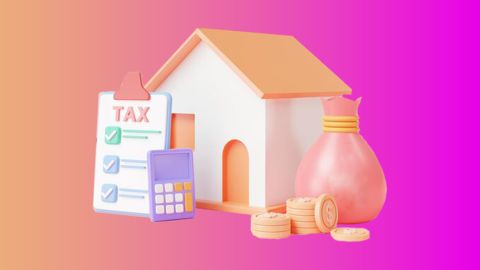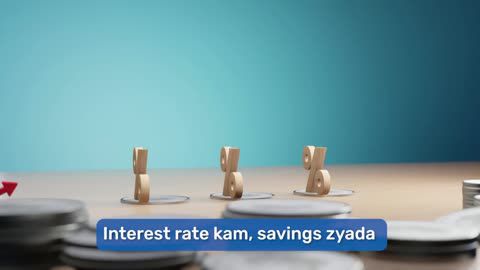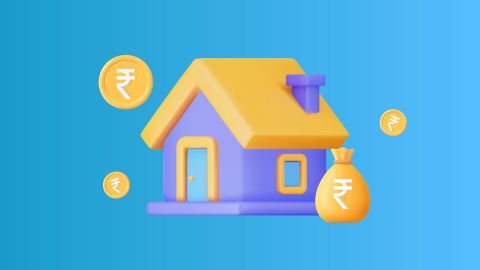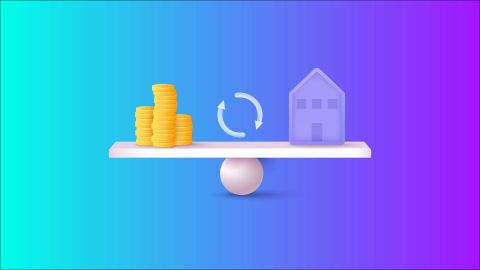Section 80EEA of the Income Tax Act offers an additional deduction of up to Rs 1.5 lakh on interest paid towards home loans for affordable housing. Introduced in Budget 2019 to boost the government’s “Housing for All” mission, this benefit is available for loans sanctioned between 1 April 2019 and 31 March 2022. It is especially helpful for first-time homebuyers and comes over and above deductions under Section 80C and Section 24. Read on to know the key features, eligibility criteria, and how to claim the deduction under Section 80EEA.
Planning to purchase your first home and looking to benefit from tax deductions? Bajaj Housing Finance offers home loans with competitive interest rates starting at 7.45%* p.a. Check your eligibility for a Bajaj Housing Finance Home Loan today. You may already be eligible, find out by entering your mobile number and OTP.
What is Section 80EEA?
Section 80EEA of the Income Tax Act offers an additional deduction on the interest paid towards a housing loan. It is designed to support first-time home buyers who are purchasing affordable residential properties. The maximum deduction that can be claimed under this section is Rs. 1,50,000 in a financial year, and the benefit continues until the loan is completely repaid. To qualify, the property’s stamp duty value should not exceed Rs. 45 lakhs, and the loan must have been sanctioned between April 2019 and March 2022. This section was introduced to extend the benefits of Section 80EE and further encourage the purchase of low-cost housing. The deduction can only be claimed by individuals, including non-resident Indians.
Eligibility criteria to claim deduction under Section 80EEA
Loan must be taken from a recognised bank or housing finance company.
The property value must not exceed Rs. 45 lakhs.
Loan sanction date should fall between 1st April 2019 and 31st March 2020.
Applicant must not own any other residential house at the time of sanction.
No other home loan interest deduction should be claimed for that year.
Benefit is available for 5 years from the sanction year of the loan.
Only the individual borrower paying interest can claim this deduction.
Conditions for claiming the deduction under Section 80EEA
To avail of the benefits under Section 80EEA, a housing loan must be obtained from a financial institution or housing finance company for the acquisition of a residential property. The loan sanction period should fall between April 1, 2019, and March 31, 2022, with the stamp duty value of the property not exceeding Rs 45 lakh. Additionally, the individual taxpayer should not be eligible for a deduction under the existing Section 80EE, and they must be a first-time homebuyer, owning no residential property as of the loan sanction date.
Conditions related to the carpet area have been outlined in the memorandum to the finance bill, although not explicitly stated in Section 80EEA. In metropolitan cities like Bengaluru, Chennai, Delhi National Capital Region (limited to New Delhi, Noida, Greater Noida, Ghaziabad, Gurgaon, Faridabad), Hyderabad, Kolkata, and Mumbai (entire Mumbai Metropolitan Region), the carpet area should not exceed 60 square meters (645 sq ft). For other cities or towns, the limit is set at 90 square meters (968 sq ft). These definitions apply to affordable real estate projects approved on or after September 1, 2019.
Section 80EEA extends the benefits introduced by Section 80EE, specifically for low-cost housing. Originally, Section 80EE allowed deductions for interest on housing loans for select financial years. Importantly, Section 80EEA does not specify residency requirements, implying that both Resident and Non-Resident Indians can claim this deduction. Additionally, it does not mandate self-occupation of the residential property, allowing individuals living in rented houses to claim the deduction. Furthermore, the deduction can be claimed jointly or singly for house purchases, with joint owners meeting the specified conditions.
How is the Section 80EEA deduction calculated?
The deduction under Section 80EEA is based on the interest paid on a home loan, subject to certain conditions. Here's how it works:
- Maximum deduction: Up to Rs. 1.5 lakh per financial year.
- Interest paid: Deduction is limited to the actual interest paid during the year.
- Loan amount limit: Applicable only if the house value is up to Rs. 45 lakh.
- Comparison for deduction: Lower of Rs. 1.5 lakh or total interest paid.
This benefit is over and above the Rs. 2 lakh deduction under Section 24(b), offering added savings for first-time homebuyers.
Maximise your tax benefits while fulfilling your dream of homeownership with Bajaj Housing Finance Home Loan. With loan amounts up to Rs. 15 Crore* and tenure up to 32 years, finding the right financing option is easy. Check your eligibility for a Bajaj Housing Finance Home Loan today. You may already be eligible, find out by entering your mobile number and OTP.
Features of Section 80EEA
Section 80EEA introduces provisions for individuals availing home loans, focusing on making housing more affordable. Some key features of this section include:
- Targeted at affordable housing: The deduction under Section 80EEA is primarily aimed at promoting affordable housing, making it accessible to a larger segment of the population.
- Additional deductions: Section 80EEA provides an additional deduction to the existing deductions available under Sections 24 and 80C of the Income Tax Act.
- Eligibility criteria: To avail of the benefits under Section 80EEA, the home loan must be taken from a financial institution and sanctioned between specific financial years.
Tax benefits on home loan (FY 2024-25)
Income Tax Act |
Deduction amount |
Section 24 |
Allows a deduction of Rs. 2 lakh per annum for interest paid on housing loan repayment. |
Section 80C |
Allows a deduction of Rs. 1.5 lakh per annum for the principal amount of housing loan repayment. |
Section 80EEA |
Allows a deduction of Rs. 1,50,000 per annum for interest paid on housing loan repayment. |
Looking to make the most of these tax benefits? Bajaj Housing Finance offers home loans with approval in just 48 hours* and low EMIs starting at Rs. 684/lakh*. Check your eligibility for a Bajaj Housing Finance Home Loan today. You may already be eligible, find out by entering your mobile number and OTP.
How is the deduction calculated under Section 80EEA?
The deduction under Section 80EEA is calculated on the basis of the interest amount paid on a housing loan, subject to conditions such as property value and eligibility. To make this clear, let us consider two scenarios.
Example 1
Mr. Mukherjee purchased a house in the financial year 2019–20, with a stamp duty value of Rs. 40 lakhs. He paid Rs. 4,00,000 in home loan interest that year. Since he did not own any other house when the loan was sanctioned, he is eligible. Under Section 24, he can claim Rs. 2,00,000 as a deduction. Additionally, as the property value is within the Rs. 45 lakh limit, he can claim Rs. 1,50,000 under Section 80EEA. Therefore, his total deduction works out to Rs. 3,50,000.
Example 2
Mr. and Mrs. Mirza purchased a house worth Rs. 45 lakhs in FY 2019–20. Mr. Mirza alone took the housing loan, paying Rs. 3,00,000 in interest for the year. Since Mrs. Mirza was not a co-borrower, she cannot claim this benefit. Mr. Mirza can claim Rs. 2,00,000 under Section 24 and an additional Rs. 1,00,000 under Section 80EEA, making his total deduction Rs. 3,00,000.
It is important to note that interest already claimed under other provisions, such as Section 24, cannot be claimed again under Section 80EEA.
Points to be considered to claim deduction u/s 80EEA
Section 80EEA does not mention residency requirements, so both residents and non-residents are eligible.
The property does not need to be self-occupied; deductions can be claimed even if you live in rented accommodation.
The deduction can be claimed either individually or jointly, depending on loan ownership.
In the case of joint ownership and a joint loan, both co-borrowers can claim the deduction, provided each meets all the conditions.
The maximum deduction under this section is Rs. 1,50,000 in addition to benefits under Section 24.
The property’s stamp duty value should not exceed Rs. 45 lakhs at the time of purchase.
Loans must have been sanctioned between April 2019 and March 2022 to qualify.
The deduction is available only on the interest paid, not on the principal repayment.
Difference between Section 80EE and Section 80EEA
The comparison table below highlights the distinctions between Section 80EE and Section 80EEA:
Sno |
Section 80EE |
Section 80EEA |
1 |
Section 80EE provides tax deduction for interest on home loan up to Rs. 50,000 specifically for first-time homebuyers. |
Section 80EEA offers tax deduction on interest payments for affordable housing loans taken up to specific financial limits, providing relief to a broader spectrum of homebuyers. |
2 |
The deduction under Section 80EE is applicable only if the loan amount does not exceed Rs. 35 lakh and the property value does not surpass Rs. 50 lakh. |
Section 80EEA extends the eligibility criteria to include loans sanctioned by financial institutions and housing finance companies, facilitating access to tax benefits for a wider range of borrowers. |
3 |
Section 80EE focuses on incentivising home ownership among first-time buyers by offering additional tax benefits on housing loans. |
Section 80EEA aims to promote affordable housing initiatives by encouraging investments in this sector through tax incentives for both lenders and borrowers. |
4 |
Taxpayers can claim deductions under Section 80EE in conjunction with existing deductions under Section 24 and Section 80C of the Income Tax Act. |
Section 80EEA complements existing tax-saving provisions, enhancing the overall benefit for individuals investing in affordable housing. |
Check also:
Related income tax sections
Popular calculators for your financial calculations




